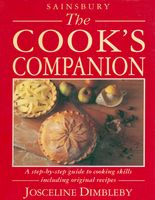Advertisement
Boiling and Poaching
Published 1991
Soft-boiled eggs, where the white is only just opaque and set and the yolk is still runny, are usually served in the shell in an egg cup with slivers of toast or ’soldiers’ to dip into them. Medium-boiled eggs, or oeufs mollets, have a firm but not rubbery white, becoming softer towards the centre with a semi-soft yolk. They are used, as are poached eggs, in many more elaborate egg dishes. Hard-boiled eggs are set all through but are nicest when they have not been cooked so long that the whites become tough and the yolks powdery. Apart from being staples of packed lunches or picnics, hard-boiled eggs are often sliced for salads. Remember that an egg should not, in fact, be boiled but simmered. It is easier to achieve the consistency you like if you soft boil eggs using the hot-water method as they can be timed more exactly. But when cooking hard-boiled eggs start them off in cold water as this is less likely to result in rubbery whites. Never cook eggs straight from the refrigerator – they should be at room temperature so they cook more quickly and are less likely to crack.

